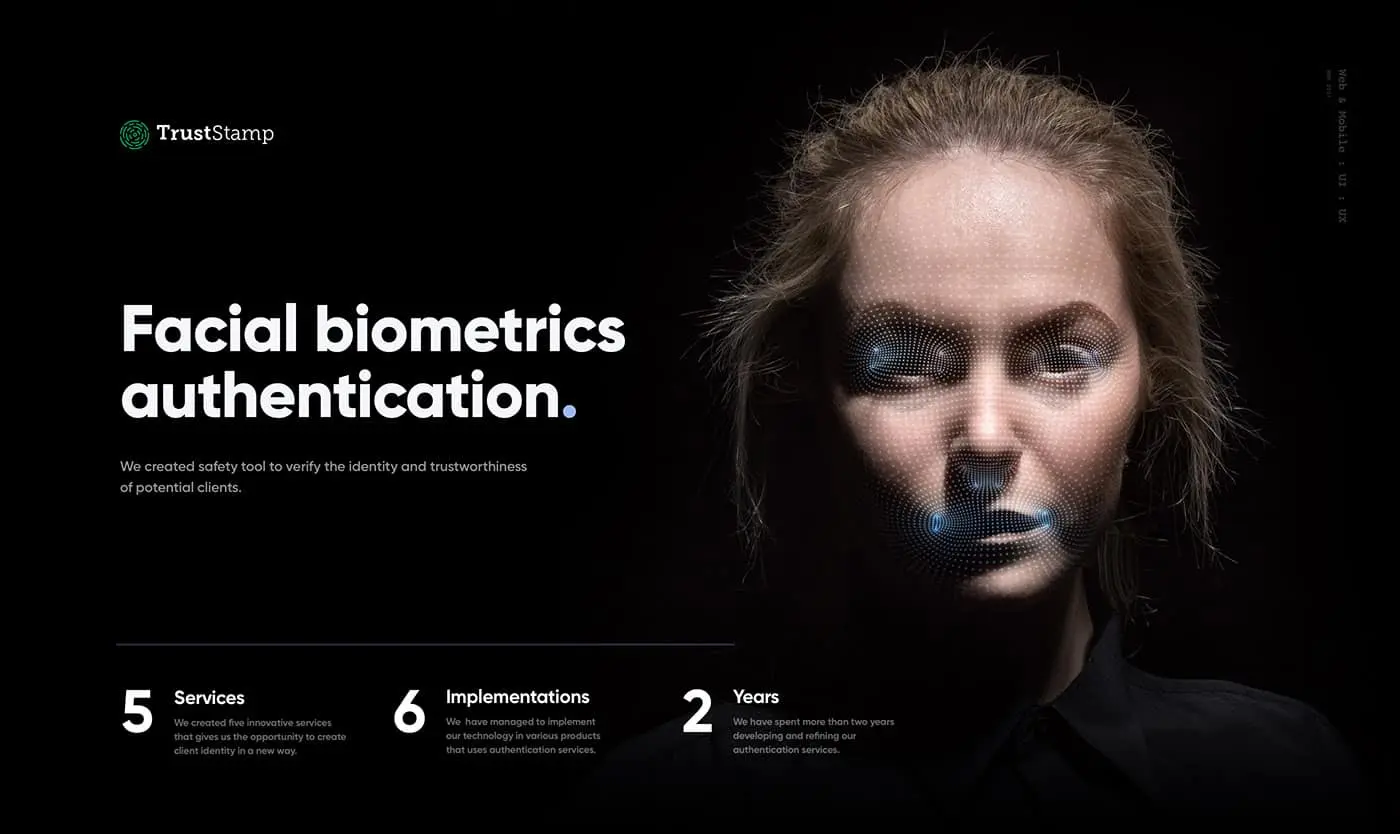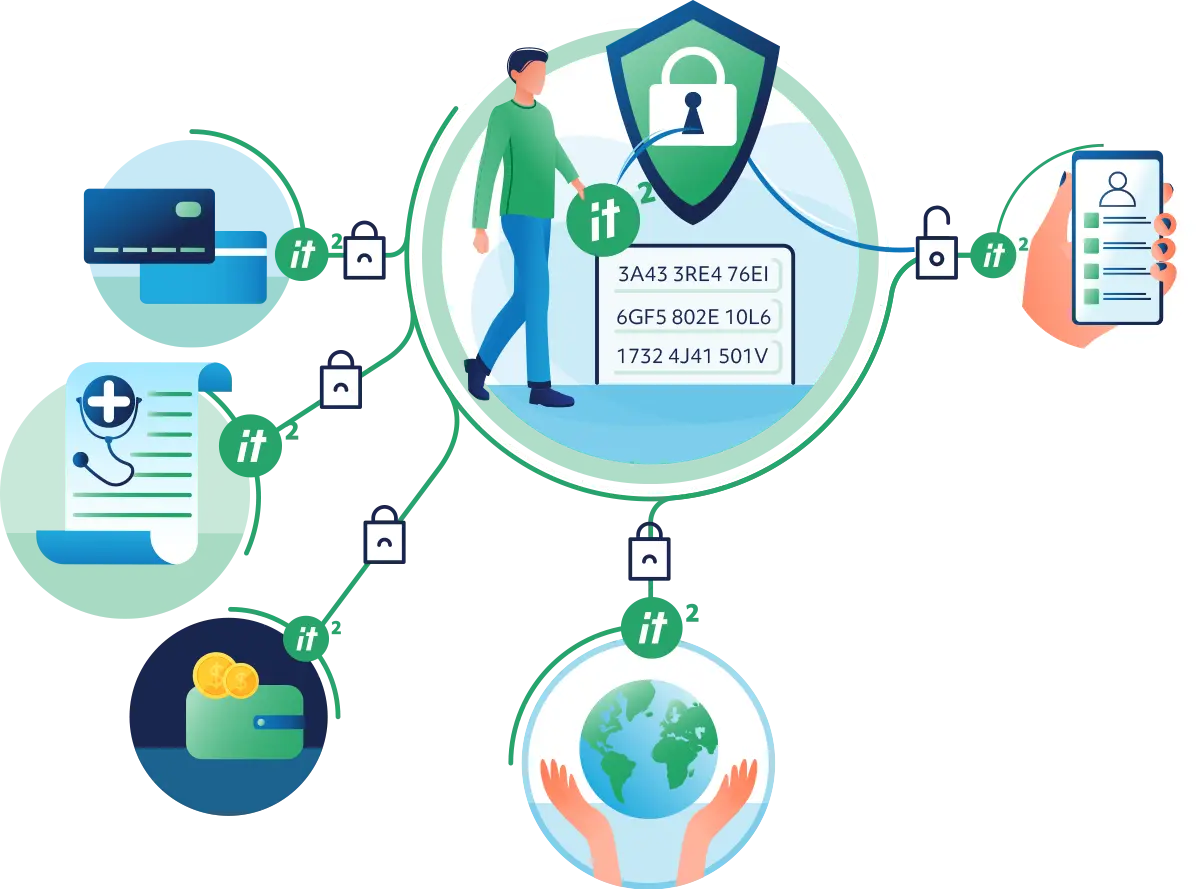AI solutions for identity verification – an interview with Trust Stamp
06.09.2021 | 5 min read

AI (which includes machine learning and data science) was founded as an academic discipline as far back as 1956, and ever since evolved at a considerable pace. At 10Clouds, we place an important focus on ensuring that we stay up to date with the latest developments in this field and we’re proud to work with clients who are operating at the cutting edge of AI.
One of these is Trust Stamp, a global leader in the sphere of identity verification. Trust Stamp technology is currently used in multiple verticals including FinTech, banking, KYC/AML compliance, real estate and law enforcement, as well as humanitarian and development services. With further growth on the agenda, we’re excited to see which sectors it might penetrate next.
We spoke to Scott Francis, CTO of Trust Stamp, about the company’s current projects, the multiple uses of its technology and about Scott’s vision for the future.
1. What are the key challenges that you came across in your latest AI developments and how did you overcome them?
The hardest part of any AI initiative is data collection. Not only do you need a relatively large sample, but you need information of high quality and potentially from a wide population set. We have spent a lot of time on creating data collection methods but also working with our collection population. In many cases, we also try to label our data sets. This allows us to be able to identify what impact specific inputs have on our training sets. It also allows us to create different sets from different populations and see how they impact the training.
2. It’s amazing to hear that your identity verification technology is being put to use in a number of ways in the developing world. When was the moment that you decided to focus your efforts here?
It was an idea that was realized from both our customers and also an incubator project that we were a part of. We previously had been more focused on the financial sector to combat fraud. One of our customers was interested in using our core biometrics and hashing technologies to foster financial inclusion in developing markets. Our incubator partners helped us grow the problem statement, hone in on the message and better understand the value proposition that we could create in the space of AI and identity verification. They got excited by this collaboration and immediately reached out to their connections to facilitate conversations. Based on our microservices approach, we were allowed to offer financial inclusion solutions without having to modify our core solution set. Additionally, it allows us to take pride in that we are not only combatting fraud in the developed world but potentially helping to save lives in the developing one.

3. We’re proud to have worked with you on projects such as Proof of Liveness and Irreversibly Transformed Identity Token (IT2). What do you think the future holds for AI and online safety? What are the next big milestones we need to reach?
I believe online safety and privacy are going to need a tremendous amount of work to be done in the future. One of the first things that businesses and individuals need to do is protect the data they have. This not only means internet/network security but also for transactions using a representation of the data that offers little to no value to the would-be criminal. Our IT2 is an example of a solution in that all of the information is hashed data of either biometric data or proxy reference. We have no clue what any of the information in our IT2 is, and it only has value once the individual has authenticated themselves against it. One of the other major issues in today’s world is that as individuals we have too much of our data stored in too many places. This makes your data only as secure as the weakest holder of it. We think the concept of zero-knowledge proofs paired with an identity solution such as IT2 is a very powerful technology that will not only improve privacy but also data security.
4. Can you reveal anything about your plans for the near future?
We definitely have many aspirational plans, most, unfortunately, we can’t go into specific details about. Our main goals are to not only improve our IT2 technology but also the biometric modalities that can be used with it. Ideally, we’d like to be the mechanism that all biometric providers can use to facilitate hashed-based authentication between modalities in a 1:1 or 1:many format. Using our solution, they will be able to do so in a way that ensures true instead of pseudo-anonymized data. This not only protects its customers but also ensures that they remain GDPR compliant. It therefore adds value both to the biometric modality provider and the company implementing the customer-facing solution. We fear the danger of biometric breaches isn’t fully realized by the general public and hope the solutions we provide will prevent biometric data from falling into the wrong hands. With our solution, the biometric data is never saved, so there is no way for criminals to get them in a breach.
5. What are you most excited about when it comes to the growing possibilities of AI use?
I think the uses of AI are still in the earliest stages. I’m looking forward to not only having systems where I use trained AI in order to facilitate solutions but also where I have other AI sets that are constantly evaluating how I can make them better. We can use AI to truly create systems that prove to be non-biased against age, gender, and ethnicity. We can also use it to reduce the overall cycle time and human resources needed to iteratively improve these systems. The computing possibilities due to cheap, powerful hardware and server systems mean that the future of AI is truly limitless. Ideally, we use it to create systems and solutions that make our lives simpler and more efficient, and add benefit and security to everyone.
Interested in AI?
Take a look at some of our other recent articles on the subject:
How do you fight smog with Machine Learning? We tried, and this is what happened
Treat data science projects as software development, and you’ll avoid the most common pitfalls



